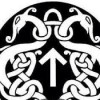The History of the Purple Heart
Exploring the History of the Purple Heart
As I am not an American citizen, I have only ever come across the American military awards in television series, books and films. I knew very little about this military award, other than it was held in quite a high regard by American service personnel and by patriotic American citizens.
The Americans are not alone in having many different and highly prized military awards. But the term Purple Heart got my attention as it feels a strange term for a military medal and my curiosity seems to have got the better of me.
So I had to find out more about this well known and often referenced military medal from the United States.
A Modern Purple Heart
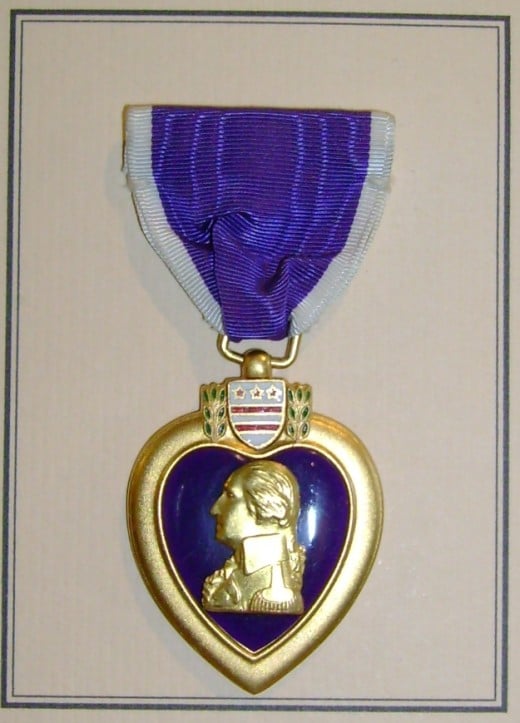
What is the Purple Heart?
The Purple Heart is a military decoration from the United States that is awarded in the name of the president to those who have been either wounded or killed whilst they served their country. This military medal can be awarded posthumously to the next of kin in the name of those who were killed in action or to those who would later of the wounds that they received in action. There have been many instances where the recipient has received this medal on the front lines or recovering in one of the many medical facilities attached to the United States Military.
The Purple Heart can be awarded to all branches of the United States military but this was not always the case. Until 1942, it was a medal solely awarded to the United States Army. The Purple Heart is as much a medal that signifies bravery in the face of the enemy, as it is a recognition of the injuries that the recipient received.
What are the Purple Heart's Origins?
This military award has its origins after the American War of Independence and it was originally known as 'the badge of military merit'. President George Washington wanted a medal to reward those troops who performed bravely in the face of the enemy. In 1782, surviving records of the time mention that the award was handed out to three non-commissioned officers from Connecticut who served valiantly in the continental army. Others may have received the Purple Heart but only the state of Connecticut has surviving records of the time. From those records, we know that those three medals were awarded to the troops by President Washington himself.
The original Purple Heart was a heart shaped piece of purple silk, which was decorated with a silver braid, the recipient was to wear this medal on their left breast. There are two of the original Purple Hearts surviving and one can be found in the American Independence Museum in Exeter, New Hampshire.
The Original Purple Heart Award
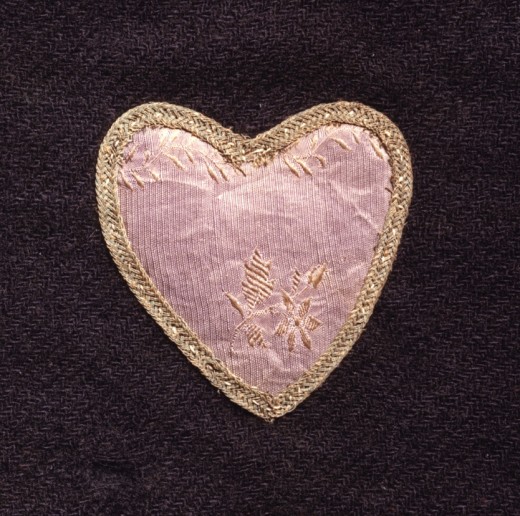
The Design of the Purple Heart
The Purple Heart that came into use on the two hundredth anniversary of George Washington's birth was designed to honour both the president and the original bravery award of 1782. Washington's profile is central to the design of the Purple Heart medal. The new medal was designed by a heraldic specialist Elizabeth Will, who went on to design the Vice-President's flag and the Distinguished Flying Cross.
Elizabeth Will was able to include George Washington's family crest on the top part of the main medal whilst using the two colours that adorned the original medal. The ribbon uses a bolder purple than the original medal but it is still contained by the silver/grey of the 1782 design.
The use of the colour purple is due to the colours longstanding association with it signifying bravery. So to have it on a medal that honours the original design and the associated attributes of the colour seems to be a good combination.
World War Two Saw Many Acts of Bravery
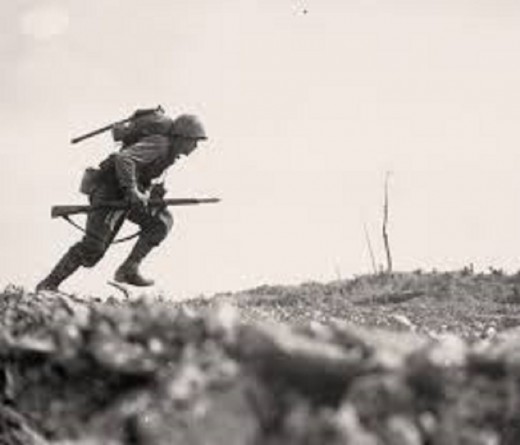
What do you have to do to get one?
Obviously, you cannot get one of these distinguished medals for just showing up. A Purple Heart is only awarded for bravery and sacrifice in the face of the enemy. It is also an award which is solely for American military personnel and it is not open to regular American civilians. That said, there have been a few occasions when the Purple Heart has been awarded in human error to someone who is not a member of the American Military. But such events are rare and usually only happen when the person who issues it is under the intense pressure of combat or there has been a genuinely honest mistake made. The recipient is usually an ally from a country that served alongside the American military in their theatre of operation at the time.
When the Purple Heart was revived in 1932 after nearly 150 years of inactivity. Veterans who had been wounded in earlier conflicts, including the Civil War, were eligible to apply for the newly reintroduced Purple Heart medal. The exact number of Civil War veterans who applied for the medal is unknown, but some estimates believe that over a dozen Purple Hearts were awarded for that conflict.
It is estimated that over 2,000,000 men and women have received a Purple Heart Medal. These figure represents a sacrifice from American Service Personnel in nearly every conflict the nation has been involved in since it gained its independence.
Global Warfare
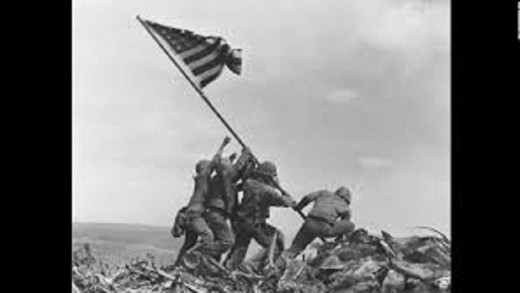
Why did the Purple Heart Fall out of use?
The Purple Heart was not awarded from the end of the eighteenth century until its reintroduction in 1932. There were efforts to reintroduce the award at various points in time but there was no real desire to bring back a medal that was linked to the birth of the United States of America. Perhaps, there was a reluctance to sully or spoil the old Purple Heart. Maybe, by giving the awards to a new breed of recipients it somehow detracted from the honour given out by the father of the nation to troops he had personally found worthy of rewarding.
One theory to its long absence from military service is that due to the prestigious nature of the medal, combined with the loss of official records relating to its former use, it meant that the Purple Heart had become largely forgotten about by successive generations of the military.
For many years, the United States was dealing with domestic conflict involving the native peoples, expansion westwards and the Civil War. Perhaps awarding soldiers during this time with such a historic medal seemed a disservice. Especially as the horror of conflict and threat of violence seemed to be ever present.
Five Quick Facts About the Purple Heart.
- In preparation for the land invasion of mainland Japan. Approximately two million Purple Hearts were manufactured as there was an expectancy of massive casualties.
- The Purple Hearts most recently given out by the 'Top Brass' to troops in Iraq and Afghanistan are the same medals that were produced for the Japanese campaign.
- The first women to receive a Purple Heart was Lieutenant Annie G. Fox. She showed incredible bravery during the attacks at Pearl Harbour in 1941.
- In the middle of the Second World War the medal became less of a medal for bravery and required an injury to the recipient in order to qualify for it.
- 1944, saw the first marines of colour to be awarded the Purple Heart. They were Corporal Samuel J. Love and Staff Sargant Timerlate Kirven. They received their Purple Hearts after the Battle of Saipan.
Can you Receive More Than One Purple Heart Medal?
You can in fact receive more than one Purple Heart and there is no limit to how many medals you can receive. The Purple Heart is one of the only American military awards that a soldier is entitled to, providing that they were injured. Other medals require you to be recommended for the military honour.
Many famous Americans who had served in the US Armed Forces have received the Purple Hears and sometimes they have been awarded the medal a few times. Here are a few famous names who have received the award.
- James Garner
- Charles Bronson
- Oliver Stone
- Ron Kovic
- Rod Serling
- Pat Tillman.
The First President Introduced the Purple Heart
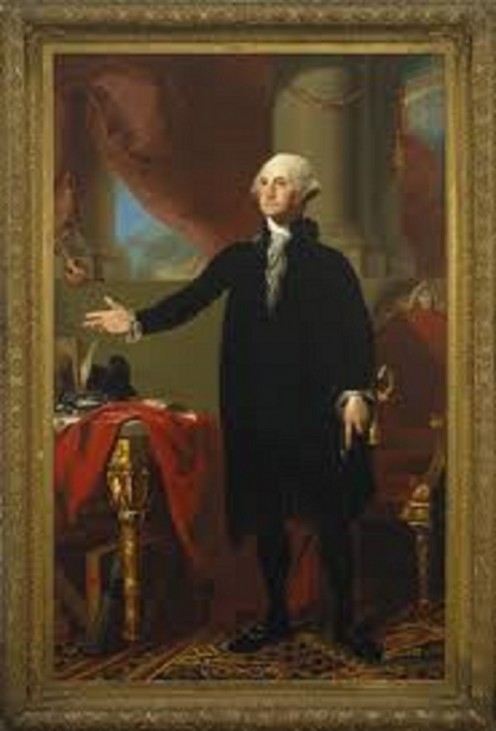
Were you paying attention?
view quiz statisticsWhat is Your Opinion About Military Medals?
Are Military Awards a Good Thing?
Related Articles
- The Hessian Mercenary in America
The War of Independence was not just American colonists versus the British Empire. The use of German mercenaries by the British Crown made this conflict both bloody and ruthless. - The Dutch Influence in Colonial America.
The forgotten history of the United States of America, includes the part that the Dutch played in creating America what it is today.
This content is accurate and true to the best of the author’s knowledge and is not meant to substitute for formal and individualized advice from a qualified professional.
© 2019 Andrew Stewart
